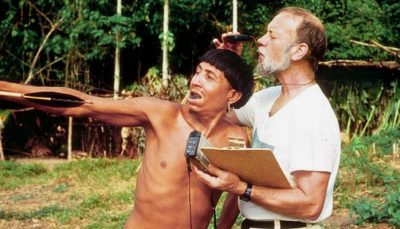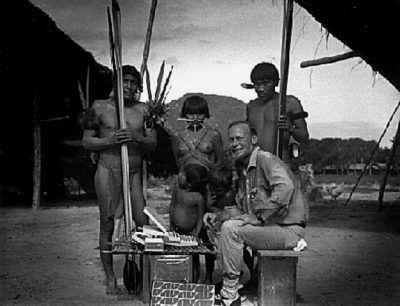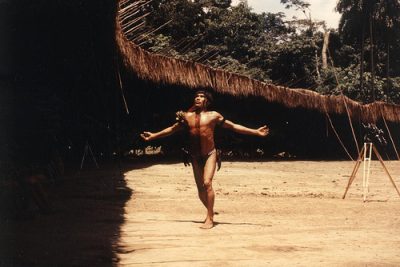By
Gulcin Newby Kennett
In the chapter titled ‘The Ethics of Image-Making’; or, “They’re Going to Put Me in the Movies. They’re Going to Make a Big Star Out of Me” from his book ‘Picturing Culture: Explorations of Film and Anthropology‘ (Ruby, 2000), Jay Ruby philosophizes about the ethical issues involved in the “production of realistic and recognizable images of people.”
He begins his argument by first stating that the ideals that guided the works of early pioneers of image production are no longer applicable either in practice or theory, due to the advancements in technology of photography/filmmaking, and the changing perception of morality in modern times. Nowadays anyone can have his/her image used in some form of media or another, fulfilling the promise of a brief stardom, which once seemed a far-fetched fantasy from an artist out there (i.e. Andy Warhol).
When he declares that “image makers show us their view of the world whether they mean to or not,” we realize that Ruby refuses to believe in even the possibility of a truly objective camera, or an image without an agenda behind it. Then if there is no objective truth in images, how can a socially sensitive artist justify his/her work involving images? According to Ruby’s argument, “the maker of images has the moral obligation to reveal the covert,” or to unearth what is hidden, while at the same time trying to avoid becoming a make-believe mirror of the real world for the paying audiences.
In order to exemplify this argument on responsible use of images, Ruby selects the field of documentary filmmaking, and applies the three issues on a similar moral dilemma faced by the anthropologists into this field. These three issues are the filmmaker’s moral responsibility to produce a film that reflects his/her true intentions for making the film, the moral obligation towards the people whose images are used in making the film, and the moral obligation with respect to the audience who will watch the film.
After stating these responsibilities, to prove their validity Ruby goes on to show that images can have multiple generated meanings depending on the settings (or circumstances) in which they are presented. The interpretation by the audience of a particular film is directly related to the social and cultural conditions of that particular audience, and therefore, it is the filmmaker’s responsibility to decide whether to be an artist with a vision of the world, or reporter of a segment of reality from the world. Truthfulness to this vision fulfills the condition for the first responsibility.
As for the filmmakers’ obligation towards their subject, Ruby raises a point about the artistic license (the regard for artists’ privilege to transform/falsify reality in order to create art), then he elaborates about the alleged exploitations of often third-world subjects by the Western filmmakers. For example, the question of exploitation can be raised about Tim Asch and Napoleon Chagnon’s film about in the life in a Venezuelan rain forest’s Yanomamo village, ‘The Ax Fight‘.
Some critics of the film argue that the depiction of this savage fight scene when coupled with claims from Chagnon about the violent ways of the Yanomamo can result in the Venezuelan government’s justifiable intervention into the lives of this seemingly uncorrupted indigenous people. Does the filmmaker (or the anthropologist) have the right to bring such a drastic change into the lives of his/her subjects? Yet how else can an artist capture a society, a culture other than to capture it at critical moments like these? Since both approaches to the matter seem equally valid in relative respects, I suspect that Ruby is actually recommending filmmakers to find a happy medium.
The filmmaker’s responsibility towards the audience is a complicated one as well, Ruby admits, since it also presents him/her with a challenge on how much should the audience know about how the film was made, and if there are any behind-the-scenes stories involving the subject(s) of the film. Some filmmakers like Robert J. Flaherty chose to disclose this information to his audience; however, because it works against the mystique (suspension of disbelief) of the film, the producers often prefer to keep their methods and motives to themselves if they can help it.
Moving from the common assumption that “art should be a little mysterious to be successful”, Ruby claims that the reflexive film has been misunderstood and mistreated by the critics because of its association with self-indulgence and narcissism. According to his belief “an intelligently used reflexivity is an essential part of all ethically produced documentaries.” This immediately brings to mind Trinh T. Minh-ha’s documentary ‘Reassemblage‘, in which short shifting footage from the lives of Senegalese women is presented with occasional self-reflexive voice over or music. This film perfectly exemplifies Ruby’s conviction that all image-makers must face their responsibilities in “a more reflective and reflexive way” than before.
While the new documentary style finds a new outlet in the medium of Television, the documentary filmmakers find themselves bound by the obligations of broadcast journalism as a result of the images’ strong association with objectivity. However, Ruby maintains that the documentary filmmaker is not merely a journalist, and their job consists of investigation more than just reporting. He points out that only a “visual equivalent” of the new journalism pioneered by Tom Wolfe and Hunter S. Thompson can justifiably be considered a journalistic documentary.
In the conclusion of his essay, Ruby reminds all image-makers that their biggest responsibility is to stop pretending that cameras do not lie, and begin concentrating on creating a more sophisticated and critical audience instead. This art form, he states, is not for interpreting an exceptionally wide human experience filtered through the eyes (points-of-view) of a select few, but to evolve with technology and art to include as many different perspectives as possible.
Through his highly thought-provoking observations, Ruby is simply trying to tell image-makers that it takes more than pointing the camera on a subject and editing these images in accordance with their artistic vision to become a truly responsible documentary filmmaker. Only when they become fully conscious of their responsibilities, will the documentary filmmakers be producing the kind of work which serves not only to the advancement of arts but also to the progress of all humanity.






No Comments Yet!
You can be first to comment this post!